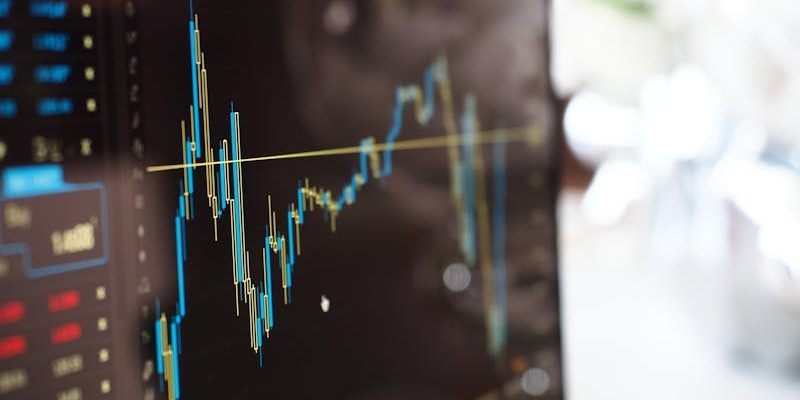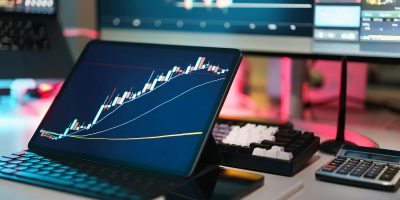Finance has always been an industry quick to adopt new technologies, so it’s no surprise that automated trading systems are now reshaping currency and derivatives markets. For regular investors, this digital evolution unlocks a whole new analytical approach to making money in forex. Algorithms help remove the emotions that often undermine human trading decisions. As automation becomes more widespread, it’s transforming finance into a sophisticated, tech-powered field.
Trading Made Easier with Automation
Monitoring charts, identifying opportunities, executing trades, managing risk – it’s a constant grind when trading currencies manually. Automated systems excel where humans fall short:
- They stick to pre-programmed rules without fear or greed swaying decisions. That consistent discipline pays off long term.
- Algorithms can monitor markets and trade 24/7, capturing moves whenever they happen.
- Bots detect signals and execute orders in milliseconds faster than humans can physically react.
- Built-in rules automatically implement stops, position sizes, and loss limits for disciplined risk management.
- Strategies can be backtested on historical data to optimize before going live.
Key Components of Automated Systems
Well-designed automated forex trading solutions share common core elements:
Advanced Algorithmic Coding
The trading logic and rules must be translated into functional computer code for automated interpretation and implementation.
Robust Technical Infrastructure
Low-latency networks, fast connections to brokers, and backup systems prevent any execution delays or downtime.
Sophisticated Analytics
Historical and real-time data feeds drive quantitative analytics to identify trading opportunities and predict price movements.
Cloud-Based Access
Cloud platforms provide secure 24/7 access to trading platforms and robot dashboards from any internet-connected device.
Ongoing Machine Learning
Self-learning algorithms continually optimize strategies by analyzing past performance and evolving. Automation fuses cutting-edge technology with data-backed logic refined over time through machine learning.
Selecting Your Approach
Many proven automated strategy types can be coded for forex trading:
Trend Following
Identify established trends and ride the momentum through breakout entries and trailing stop exits. A smoothly profitable approach.
Arbitrage Trading
Exploit fleeting price differentials between assets or exchanges by simultaneously buying and selling for low-risk gains.
Algorithmic Hedging
Use complex algorithms to open complementary long and short positions designed to hedge risks and deliver steady balanced growth.
High-Frequency Scalping
Rapid fire trades aimed at capturing small profits from minor price fluctuations across high volumes of transactions.
Sentiment Analysis
Assess news, social media, and other data inputs to gauge overall market sentiment and predict price reactions. Determine which strategy aligns best with your risk tolerance, return objectives, and market preferences.
Evaluating Performance and Risks
The main advantage of automated systems is their capacity to backtest. Run extensive simulations across years of historical data to objectively measure:
- Total return
- Annualized return
- Risk metrics like drawdown, sharpe ratio, and volatility
- Average win percentage
- Probable income expectancy
Additionally, implement strict risk controls by coding stops, position sizing, and loss limits directly into the algo. No strategy is foolproof, so manage risks smartly and maintain realistic expectations.
Conclusion
In the coming years, automation will dominate finance. Hedge funds, banks, and institutional investors already rely on complex algo trading. Now, retail traders are also embracing robo-advisors and forex trading bots to simplify investing and potentially achieve long-term hands-free returns.
However, humans are still required to strategize, code algorithms, monitor performance, and continually improve. Automation enhances how trading is executed, not entirely replacing human intelligence. Future finance professionals will leverage automation while focusing more on insight, strategy, and opportunity.
Sources:
- Leveraging Big Data and AI: How Forex Trading Robots Are Transforming Financial Markets (smartdatacollective.com)
- Revolutionizing Trading with Automated Forex Robots: A Game-Changer for Entrepreneurs (andysowards.com)
- The Pros and Cons of Automated Forex Trading Systems | Smart Prop Trader
DISCLAIMER: This article is sponsored and does not substitute for professional advice or help. Any action you take based on the information presented in this article is strictly at your own risk and responsibility.
Feature image supplied






[…] Gigapips Forex automation is an advanced solution for traders looking to fully automate their trading strategies. This system uses high-level algorithms to scan the market for profitable opportunities and execute trades autonomously. Gigapips is known for its accuracy and adaptability, making it a preferred choice for traders aiming to maximize their trading efficiency. […]
Wonderful article, thank you for sharing. Kadashika